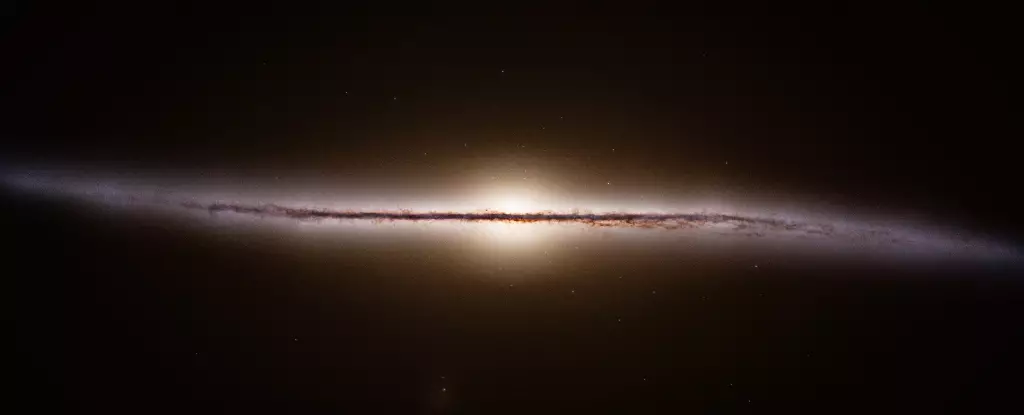The Gaia mission conducted by the European Space Agency (ESA) has proven to be a revolutionary endeavor in the field of astronomy, fundamentally altering our perception of the Milky Way galaxy. When evaluating the significance of scientific projects, a key metric is their ability to challenge and change our existing knowledge. By this standard, Gaia has emerged as a resplendent triumph by providing a comprehensive three-dimensional representation of our galaxy, leading us to reconsider long-held astronomical beliefs. As we approach the conclusion of this impressive mission, it is essential to recognize its contributions that have significantly advanced our grasp of the cosmos surrounding us.
At the heart of the Gaia mission lies an extraordinary commitment to data collection. Over the span of 11 years, the spacecraft has accomplished the astonishing feat of conducting an impressive three trillion observations across almost two billion individual celestial bodies, predominantly stars. Such a vast amount of data has allowed Gaia to not only create a 2D image but to meticulously illustrate a 3D map that captures the dynamic essence of the Milky Way. Gone are the days of static representations; Gaia’s map reveals the intricate movements and history of stars, morphing our understanding of stellar motion and evolution.
Historically, attempts to delineate the structure of the Milky Way have relied heavily on techniques such as radio astronomy, which surged in popularity in the 1950s. This method provided insights by allowing astronomers to penetrate cosmic dust and examine hydrogen distributions. Pioneering surveys conducted in the early 1950s laid bare the spiral structure we now recognize, unveiling prominent features such as the galaxy’s spiral arms.
Subsequent advances relied on various tools, including the observation of variable stars like RR Lyrae and Cepheids, which function as reliable distance markers, allowing researchers to map galactic frameworks with greater accuracy. Notably, studies utilizing infrared telescopes such as NASA’s IRAS also contributed to our ever-evolving understanding of the Milky Way, identifying structures like the central bar. Nonetheless, these earlier missions had their limitations, and the field longed for more precise data. The launch of the ESA’s Hipparcos mission in 1989 marked a significant stride, as it measured the motion of around 100,000 stars. While a commendable effort, Hipparcos paled in comparison to the scale and precision of Gaia’s capabilities.
Launched in 2013, Gaia has since revolutionized our celestial knowledge. The ingenuity of the mission lies not just in its technical capabilities, but also in its unique approach. Operating from its designated position at the second Lagrange point (L2), Gaia has provided astronomical data that offers an unprecedented view from within our galactic confines. Unlike previous missions that focused on selective stellar populations, Gaia’s expansive reach has allowed it to deliver comprehensive measurements of star positions and motions throughout the Milky Way.
Illustrations produced from Gaia’s extensive data have given us breathtaking depictions of our galaxy’s structure, showcasing multiple arms and intricate features that were previously obscured. New findings have unveiled unexpected complexities such as fossil arms that may be remnants of ancient tidal interactions or the aftermath of gravitational dance with neighboring galaxies.
One of the most captivating revelations emerging from Gaia’s observations is a newfound insight into the galactic disk’s wavering structure, likely influenced by gravitational interactions with the Sagittarius Dwarf Spheroidal Galaxy. This discovery highlights the dynamic interplay between galaxies and provides context for the evolutionary story of the Milky Way.
Moreover, Gaia has illuminated the boundaries of our galaxy, revealing filamentary structures that suggest an intricate tapestry of cosmic interactions. These findings are not merely academic; they challenge previous models of galactic dynamics and compel us to revisit our assumptions about the formation and transformation of galaxies over eons.
While the current chapter of the Gaia mission may be nearing its closure, the comprehensive data it has gathered is still being analyzed, with the final data release scheduled for 2030. The anticipation for future discoveries remains high as astronomers and researchers sift through this immense trove of information, eager to unveil further mysteries of our galactic home.
In summation, the Gaia mission stands as a monumental achievement in the quest for cosmic knowledge. It challenges previous conceptions and has provided us with an intricate, multi-dimensional understanding of the Milky Way. As scientists continue to explore the data derived from this remarkable mission, we can only imagine the far-reaching implications it will have on the future of astronomy, guiding us into new realms of understanding and appreciation of the universe we inhabit.


Leave a Reply